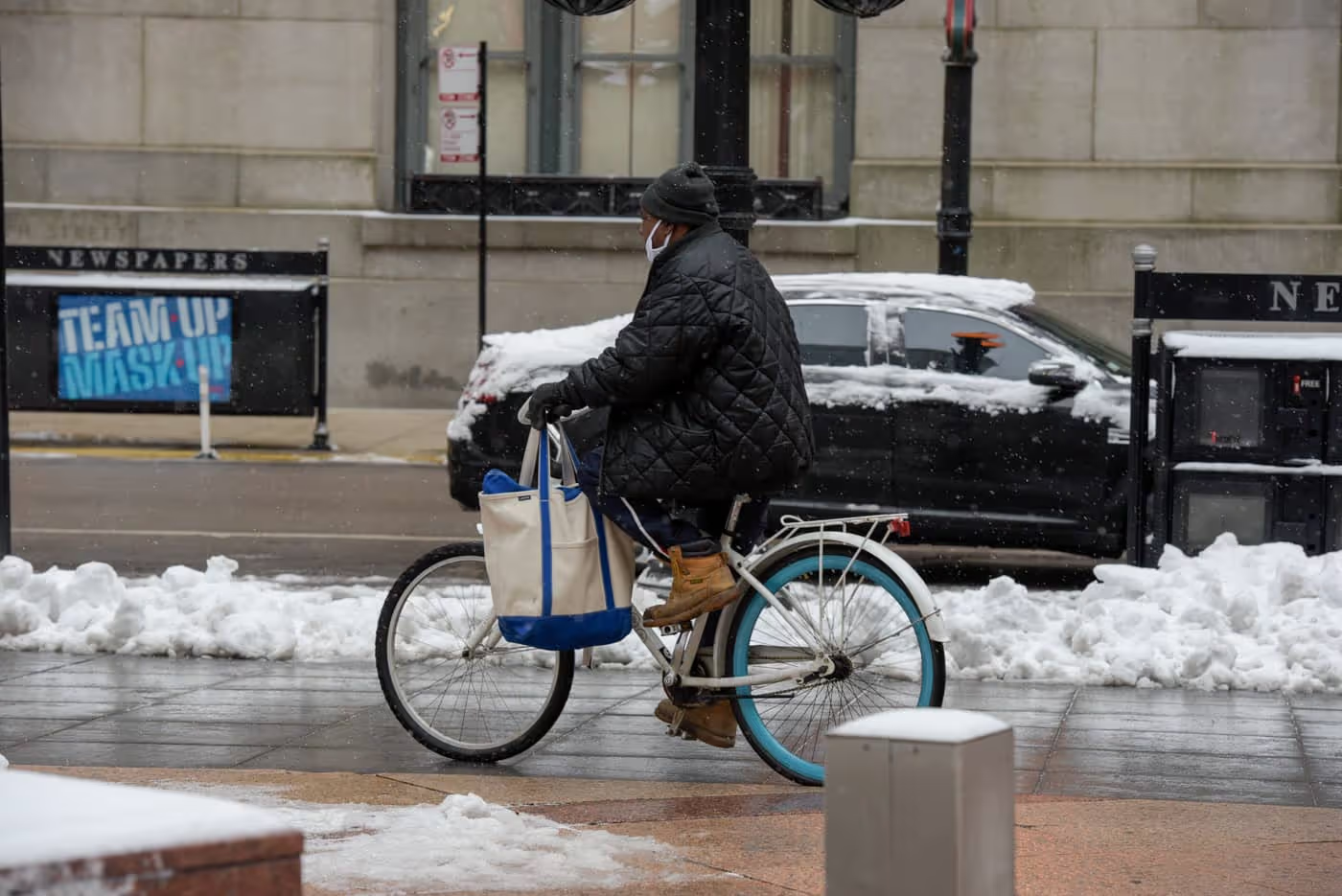Bikers share the road, so they should share costs
Of the many recent changes to urban transportation, few modes outside of the expansion of group travel technologies such as buses and trains have had a greater impact on motorists and pedestrians residing in metropolitan areas than bicycles.
Over the past few decades, transportation in urban areas has become more complex because of the number of modes involved, the multitude of origins and destinations, and both the volume and variety of traffic. One group of users of local streets and pedestrian paths — bicyclists — as most have come to notice, possess a haughtiness that city streets are their private dominion. This hubris common among cyclists tends to be rooted in the fact bikers are exercising and because they are not burning fossil fuels. This conceit is also strengthened owing in part to the influence bicyclists hold over lawmakers and the growth of streets with protected bike lanes.
In one Chicago neighborhood, Lincoln Park, there is an ongoing dustup about new bike lanes along Dickens Avenue — the Dickens Avenue Neighborhood Greenway. The Greenway adds a two-way bike lane onto Dickens, which has been, and continues to be, a one-way street for motor vehicles. It has been referred to as a contraflow.
The Dickens Greenway has caused much confusion, which is why some Lincoln Park residents have risen in opposition to its presence. Opponents to the Greenway believe that the design of the bike lanes will fluster motorists and lead to autos going the wrong way on that one-way, causing head-on collisions between vehicles and cyclists. Residents also fear the new protected bike lanes could possibly create instances dangerous enough where pedestrians are struck by autos or cyclists.
StreetsBlog, a biking and public transportation advocacy website, that rightly can be called anti-automobile, is of course touting the benefits of the Dickens Greenway. Only recently, in a peculiar development, a rally was held in support of the Greenway.
While there are doubtlessly irresponsible drivers of automobiles on Chicago streets, there is a comparable number of reckless bicyclists. Residents in Lincoln Park who are resolutely opposed to the Greenway describe bikers in the area as irresponsibly navigating through traffic, operating outside lanes, ignoring stop signs, and deliberately pedaling the wrong way on one-way streets. Residents also state bikers violate simple traffic rules by riding down streets three-or-four-abreast. In Illinois, laws have been adopted placing restrictions on cyclists, which been modeled on those covering motorcyclists on the roadway.
Outside of Lincoln Park, aggressive cyclists are also known to be a menace on the Lakefront Trail along Lake Michigan and on the North Branch Trail, a network that connects Chicago to suburban Cook County communities. Although there is a 15-mile speed limit on Forest Preserve District of Cook County trails, hikers and trail walkers report cyclists regularly exceeding the posted limit. Some careless cyclists overstep limits so egregiously, local residents assert they regularly experience near misses with cyclists or bikers plowing into trail walkers enjoying a walk on the Cook County trails.
Prior to the COVID-19 lockdowns, seniors were known to walk in groups on the North Branch Trails in suburban Skokie. In an ill-advised move to control the pandemic, then-Mayor Lori Lightfoot closed down Chicago’s parks and the Lakefront Trail System. Lightfoot’s punitive anti-COVID measure led many urban bicyclists to seek refuge the suburbs enclaves, where they were able to bike. The addition of Chicago’s population of bike enthusiasts on the North Branch Trail created such congestion it resembled Quicksilver, the 1986 film in which Kevin Bacon portrays a hyped-up bike messenger. As the lockdown wore on, the overcrowded trails the elderly had once maximized on, caused some senior citizens to fear for their safety.
Following the end of the COVID confinements, cyclists who had temporarily relocated to the suburbs returned to their routine rides on the Chicago lakefront, but the senior walking group abandon their weekly strolls.
If Chicago-area bikers have developed an image problem, it is well-deserved. With the introduction of protected bike lanes, a sense of entitlement has developed among urban bikers. Bikers regularly smash into cars causing damage to automobiles, travel outside bike lanes, weave in and out of traffic, travel the wrong way on one-way-streets, and ignore traffic signals. Other menacing behavior includes treating speed limits as speed minimums and road-rage incidents. Cyclists are also culpable for accidents involving pedestrians.
At the Dickens Greenway bike rally, StreetsBlog Chicago recorded a solitary protester holding a sign reading: “Bike lanes are elitist — bikers get a license.” While a discussion over the validity of elitism among cyclists is debatable, the protester’s suggestion for bikers to obtain a license is worth serious discussion. If the goal of the anti-automobile cyclist mob is to transform Chicago into a bicycle wonderland similar to Utrecht, Netherlands — with ubiquitous bike lanes — succeeds, then Chicago issuing licenses to bikers and demanding cyclists carry liability insurance are requirements bikers should fulfill to ride on public roads.
Most cyclists won’t agree with compulsory licensing and insurance. Many bikers demand their perceived right to ride aggressively and recklessly wherever they want. Bikers want freedom without responsibility. Children think that way.
The City of Chicago has gone to great trouble to make their roads safe and straightforward for drivers to use. Chicago has also exerted itself to accommodate bikers. Perhaps it is time for the City Council to take up discussions over requirements for authorization to cycle on public roads.
The streets of the Chicago area belong to everyone, not just cyclists.

